Cedar trees are some of the most majestic and versatile evergreens, prized for their fragrant wood, lush foliage, and resilience in various climates. With many species found across the world, these trees are commonly used for landscaping, timber, and even essential oils. Understanding the types of cedar trees can help gardeners, homeowners, and nature enthusiasts choose the right species for their needs.
There are both true cedars, belonging to the Cedrus genus, and false cedars, which come from other genera but share similar characteristics. Each type varies in size, shape, needle arrangement, and bark texture, making identification crucial for proper care and cultivation. Whether growing in mountainous regions, dry forests, or ornamental gardens, the types of cedar trees exhibit remarkable diversity.
In this guide, we will explore 27 different types of cedar trees, highlighting their unique features, growing conditions, and ideal uses. With pictures and identification tips, this article will serve as a comprehensive resource for anyone looking to appreciate or plant these stunning evergreens.
Different Types of Cedar Trees
Lebanon Cedar
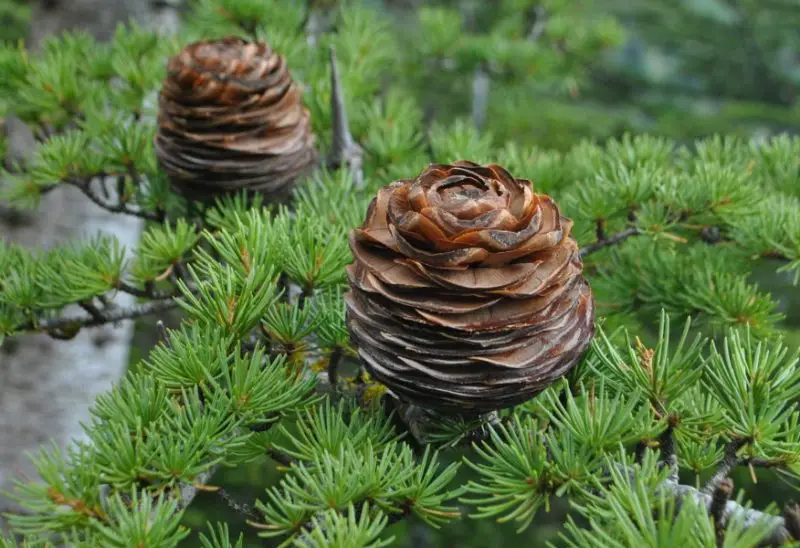
Lebanon Cedar (Cedrus libani) is a historic and symbolic tree, native to the mountains of the Middle East. This majestic evergreen is known for its massive size and spreading, flat-topped crown. The durable wood of Lebanon Cedar was historically used in shipbuilding and temple construction, including in ancient Egypt and Mesopotamia.
It thrives in USDA hardiness zones 5–9, preferring well-drained soils and full sun. Over time, the tree develops a dramatic, sculptural form that makes it a prized specimen in large landscapes. As the national emblem of Lebanon, it holds deep cultural and historical significance.
Deodar Cedar

Deodar Cedar (Cedrus deodara), native to the Himalayas, is a graceful, fast-growing evergreen with arching branches and soft, bluish-green needles. It is widely planted as an ornamental tree in parks, estates, and large gardens due to its elegant, weeping habit. The wood of Deodar Cedar is naturally fragrant and resistant to rot, making it useful in construction and carpentry.
This species grows well in USDA hardiness zones 7–9, preferring well-drained soils and full sun. It is drought-tolerant once established and can withstand hot, dry conditions better than other true cedars. Its beauty and adaptability make it a popular choice for landscaping worldwide.
Cyprus Cedar

Cyprus Cedar (Cedrus brevifolia) is a rare and endangered evergreen species native to the mountainous regions of Cyprus. It closely resembles Lebanon Cedar but is smaller in stature, with a straight trunk and dense, dark green foliage. The tree is highly adapted to the dry Mediterranean climate and thrives in rocky, well-drained soils.
The wood of Cyprus Cedar is durable and aromatic, traditionally used in local construction and carpentry. It is well-suited to USDA hardiness zones 8–10. Conservation efforts are in place to protect this species, as its natural populations have declined due to deforestation and habitat loss.
Western Red Cedar
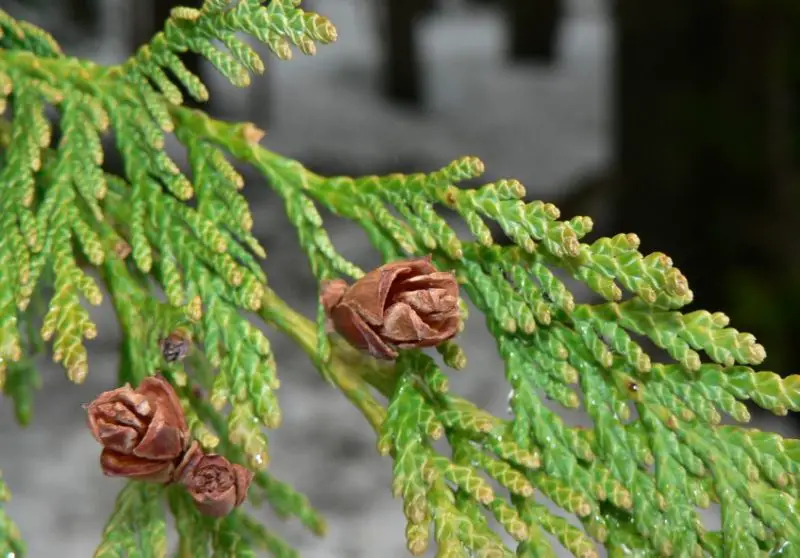
Western Red Cedar (Thuja plicata) is native to the Pacific Northwest of North America, thriving in moist, temperate forests. This evergreen tree is well-known for its resistance to decay, making it a top choice for outdoor construction, including fencing, siding, and decking. Its wood has a warm reddish-brown hue and emits a pleasant, aromatic scent.
This species can reach heights of 200 feet and prefers well-drained, moist soils. It grows best in USDA hardiness zones 5–7. In addition to its practical uses, Western Red Cedar provides habitat for wildlife and is culturally significant to Indigenous communities for its versatile wood and medicinal properties.
Eastern Red Cedar
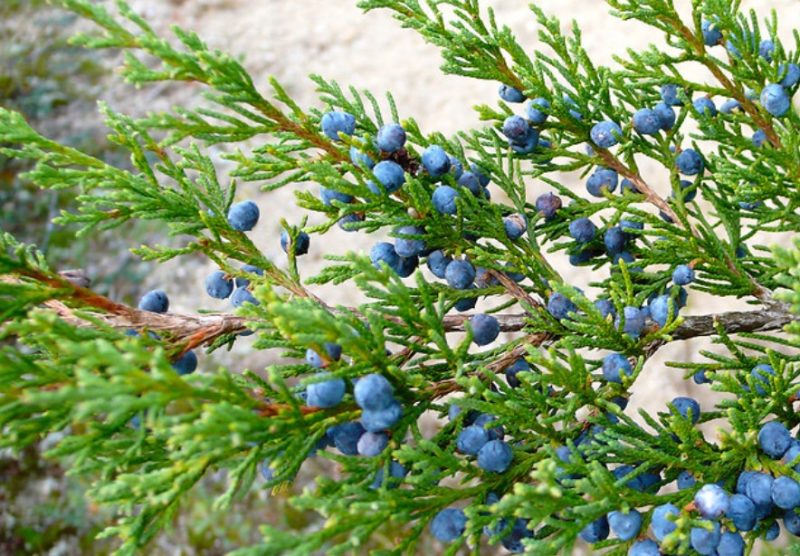
Eastern Red Cedar (Juniperus virginiana) is a hardy, slow-growing evergreen found throughout the eastern United States. Despite its name, it is a type of juniper rather than a true cedar. The tree is highly valued for its aromatic, reddish wood, which is naturally resistant to insects and decay. It is commonly used in cedar chests, closets, and as a natural moth repellent.
This adaptable tree can thrive in a variety of soil conditions, from dry, rocky sites to rich, loamy soils. It is well-suited to USDA hardiness zones 2–9. In addition to its wood, Eastern Red Cedar produces small bluish berries that provide food for birds and wildlife.
Atlas Cedar
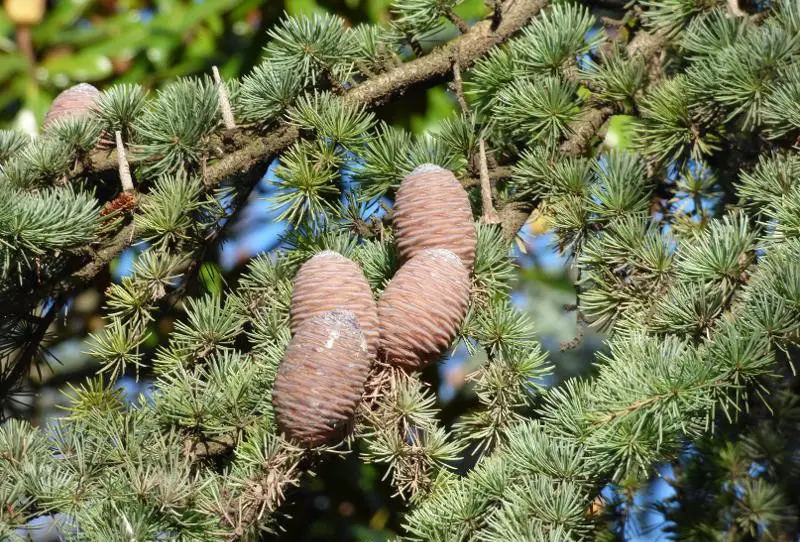
Atlas Cedar (Cedrus atlantica) is a striking evergreen tree native to the Atlas Mountains of Morocco and Algeria. It features distinctive blue-green needles and a broad, spreading canopy, making it a favorite choice for ornamental planting in parks and large gardens. Its wood is highly durable and naturally resistant to rot, making it valuable for construction and woodworking.
This species prefers well-drained soils and thrives in USDA hardiness zones 6–9. With its drought tolerance and ability to withstand harsh conditions, Atlas Cedar is an excellent choice for landscaping in dry climates. Some cultivars, such as the ‘Glauca’ variety, are especially popular for their intense blue foliage.
Spanish Cedar
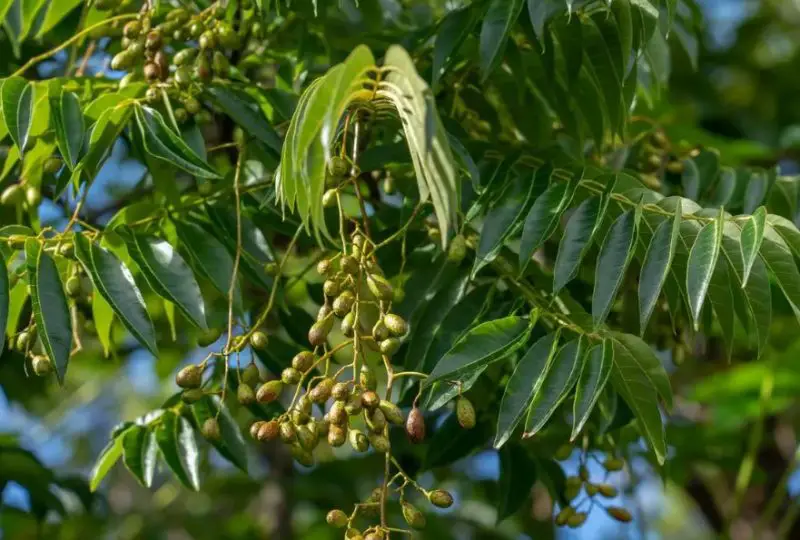
Spanish Cedar (Cedrela odorata) is not a true cedar but a member of the mahogany family. Native to Central and South America, it is widely cultivated for its lightweight, aromatic wood, which is commonly used in cigar boxes, furniture, and cabinetry. Its resistance to insects and decay makes it a preferred material for humid environments.
This species thrives in tropical and subtropical climates, growing in USDA hardiness zones 10–12. Spanish Cedar is a fast-growing tree that plays a vital role in reforestation programs. However, overharvesting has led to population declines, prompting conservation efforts in many regions.
Alaskan Yellow Cedar
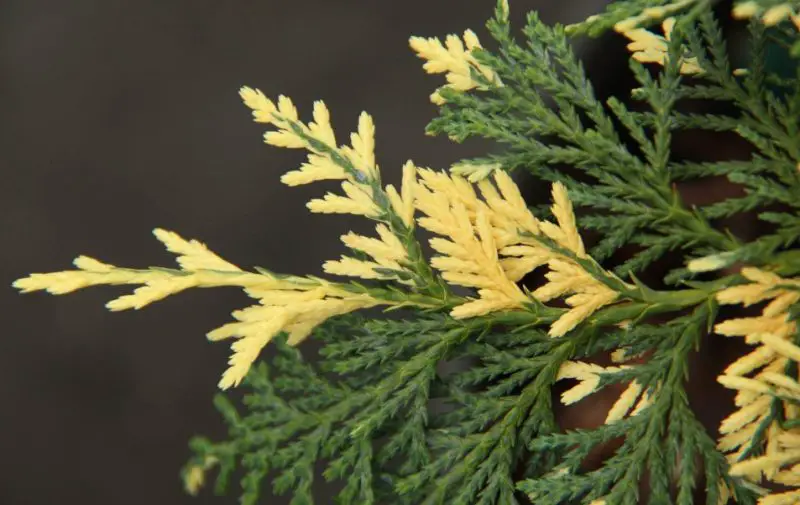
Alaskan Yellow Cedar (Cupressus nootkatensis), also known as Nootka Cypress, is a slow-growing conifer native to the Pacific Northwest of North America. Its pale yellow wood is highly valued for its fine texture, strength, and natural resistance to decay and insects. These qualities make it an ideal choice for boat building, outdoor furniture, and other marine applications.
Thriving in USDA hardiness zones 4–8, this tree prefers cool, moist climates and well-drained soils. Despite its durability, Alaskan Yellow Cedar is under threat due to climate change, which has impacted its natural habitat in coastal forests. Sustainable forestry practices are being implemented to preserve this valuable species.
Port Orford Cedar
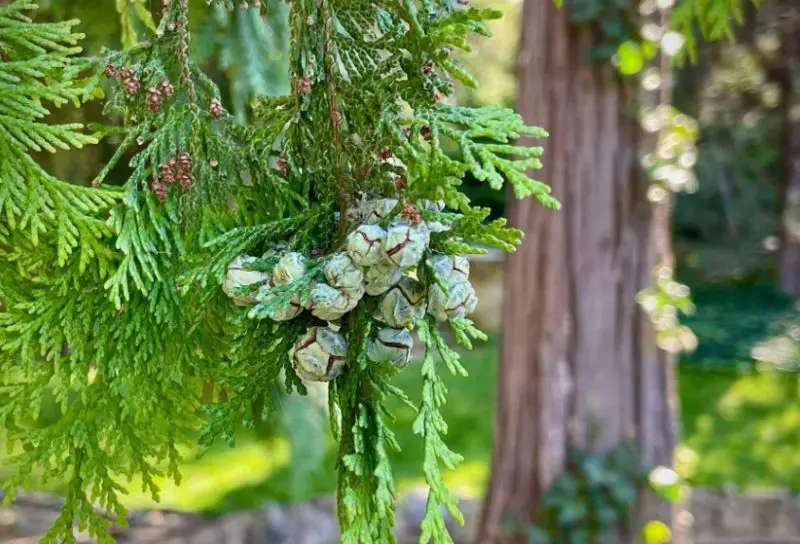
Port Orford Cedar (Chamaecyparis lawsoniana) is a rare and highly prized evergreen tree native to southwestern Oregon and northern California. It is known for its strong, fine-grained wood, which is almost white in color and resistant to decay. This makes it an excellent choice for high-quality construction, including boats, bridges, and outdoor structures.
This species thrives in USDA hardiness zones 5–8, preferring cool, moist environments with well-drained soils. Unfortunately, Port Orford Cedar populations have been affected by root rot caused by a fungal pathogen, leading to conservation concerns. Efforts are underway to manage the spread of this disease and protect the species.
Incense Cedar
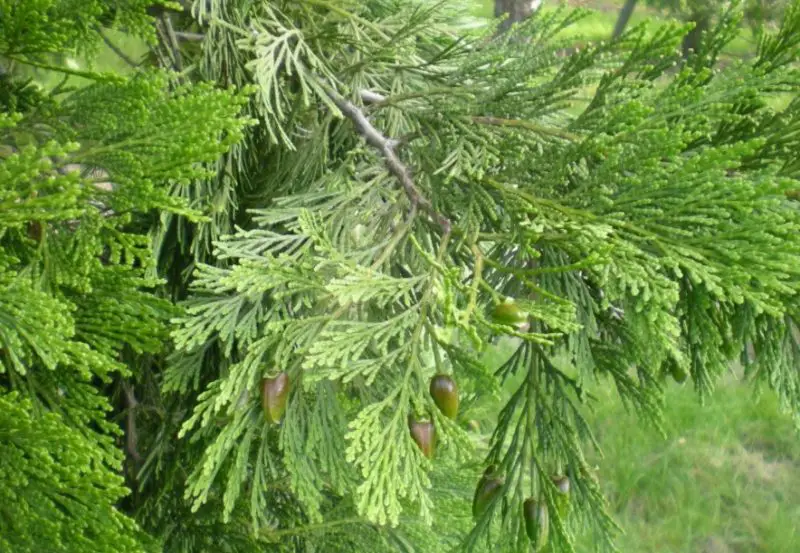
Incense Cedar (Calocedrus decurrens) is a tall, aromatic tree native to the western United States. It is best known for its use in pencil production, as well as for cedar-lined chests and outdoor construction. Its reddish-brown bark and dense, evergreen foliage make it a visually striking addition to landscapes.
Growing in USDA hardiness zones 5–8, Incense Cedar is highly adaptable and can tolerate a range of soil types, from dry rocky slopes to moist forest environments. Its natural resistance to decay and insects makes it a durable and long-lasting wood choice for various applications.
White Cedar
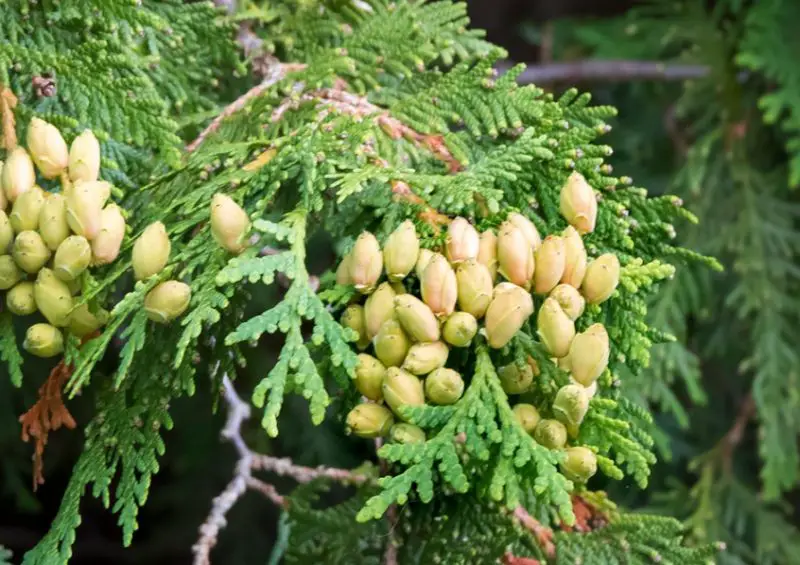
White Cedar (Thuja occidentalis), also known as Northern White Cedar, is a hardy evergreen tree native to eastern North America. It is a slow-growing species that thrives in wetlands, swamps, and cool forested areas. Its wood is light, aromatic, and naturally resistant to rot and insects, making it highly durable for outdoor use.
Commonly used for shingles, fencing, and rustic furniture, White Cedar is valued for its longevity and weather resistance. It grows best in USDA hardiness zones 2–7, tolerating cold climates and poor soils. Additionally, its dense foliage provides excellent shelter for wildlife, including deer and birds.
Japanese Cedar (Sugi)
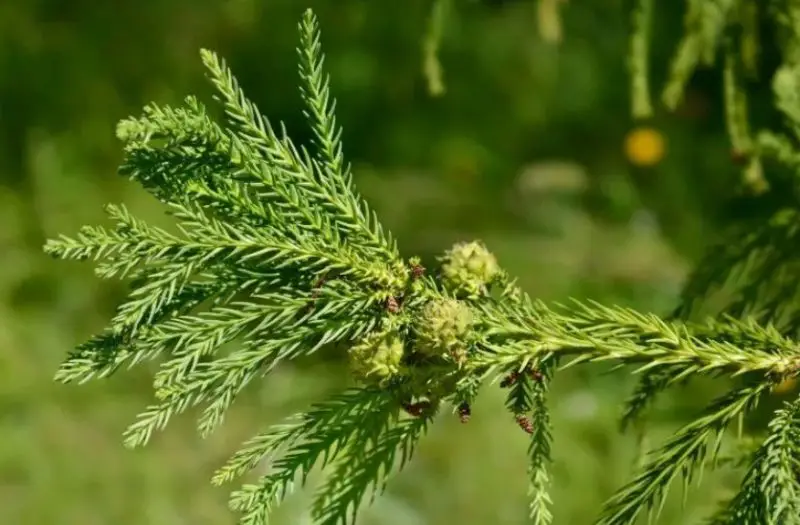
Japanese Cedar (Cryptomeria japonica), or Sugi, is Japan’s national tree and an important cultural symbol. This tall, straight-trunked conifer features reddish-brown wood that is lightweight yet highly resistant to decay, making it ideal for traditional Japanese architecture, including temples and shrines.
Sugi thrives in USDA hardiness zones 6–9 and prefers humid, mountainous regions with well-drained soils. It is also popular in landscaping, especially in its dwarf forms, which are used in bonsai and ornamental gardens. Its soft, feathery foliage and striking bark add to its aesthetic appeal.
Himalayan Cedar
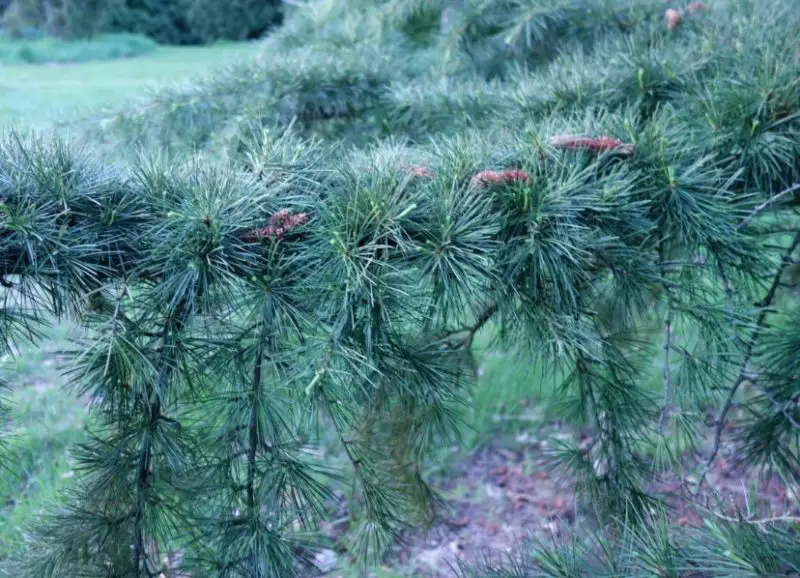
Himalayan Cedar (Cedrus deodara), also known as Deodar Cedar, is a majestic evergreen native to the Himalayas. It is easily recognized by its drooping branches, soft, bluish-green needles, and strong, fragrant wood. This species is highly valued for both ornamental and construction purposes.
Thriving in USDA hardiness zones 7–9, Himalayan Cedar prefers well-drained soils and full sun. It is often planted in parks, estates, and large gardens for its graceful form. In its native range, the wood is widely used in temples, furniture making, and traditional Himalayan construction.
Blue Atlas Cedar
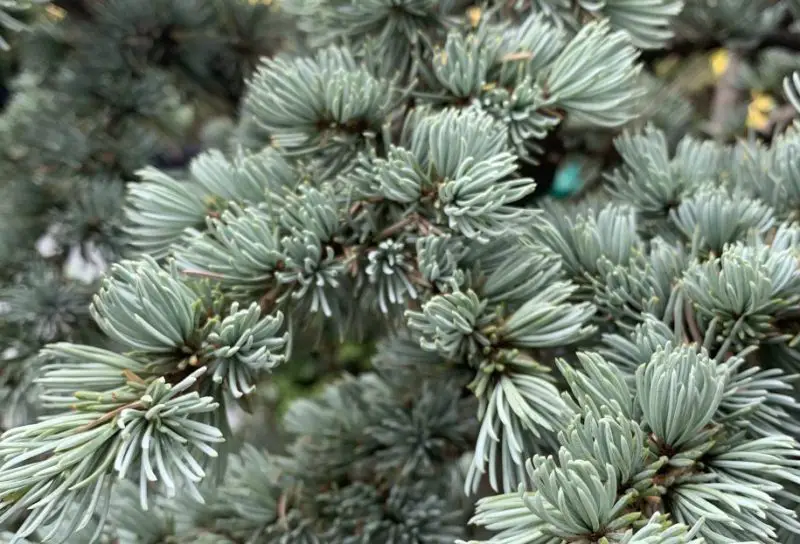
Blue Atlas Cedar (Cedrus atlantica ‘Glauca’) is a striking variety of Atlas Cedar known for its silvery-blue needles. Its unique coloration and sculptural form make it a standout choice for ornamental landscaping, often planted as a focal point in gardens and large landscapes.
This tree grows best in USDA hardiness zones 6–9, requiring well-drained soils and full sun. It is highly drought-tolerant once established, making it suitable for dry climates. Blue Atlas Cedar is particularly popular in Mediterranean-style landscapes, where its striking foliage contrasts beautifully with other greenery.
Cedrela Odorata (Cigar Box Cedar)

Cedrela Odorata (Cedrela odorata), commonly known as Cigar Box Cedar, is a tropical hardwood species native to Central and South America. Despite its name, it is not a true cedar but belongs to the mahogany family. It is prized for its aromatic wood, which naturally repels insects and is used extensively in cigar boxes, furniture, and cabinetry.
Growing in USDA hardiness zones 10–12, Cedrela Odorata thrives in warm, humid climates with well-drained soils. Due to overharvesting, it has become increasingly rare in some regions, leading to conservation efforts to ensure sustainable cultivation and forestry practices.
Cypriot Cedar
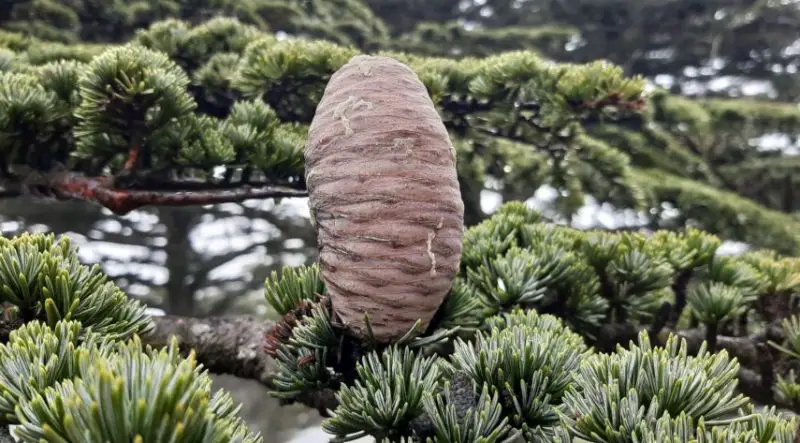
Cypriot Cedar (Cedrus brevifolia), a close relative of the Cyprus Cedar, is a rare and distinctive tree native to the mountainous regions of Cyprus. It has a compact, conical shape with dense, dark green needles, making it well-suited to the island’s dry, rocky terrain. Its wood is highly aromatic and resistant to decay, making it a valuable resource for traditional construction and carpentry.
This species thrives in USDA hardiness zones 8–10, preferring well-drained soils and warm climates. Due to its limited natural range, conservation efforts are in place to protect Cypriot Cedar from habitat loss and deforestation.
African Cedar

African Cedar (Cedrela africana) is a fast-growing tropical tree native to the forests of Africa. Despite its name, it is not a true cedar but belongs to the mahogany family. It is highly valued for its lightweight, aromatic wood, which is commonly used in furniture making, cabinetry, and interior paneling.
This species grows in USDA hardiness zones 10–12, thriving in warm, humid climates with well-drained soils. African Cedar is an important timber resource in many African countries, though deforestation and unsustainable harvesting have led to conservation concerns in some regions.
Mount Atlas Cedar
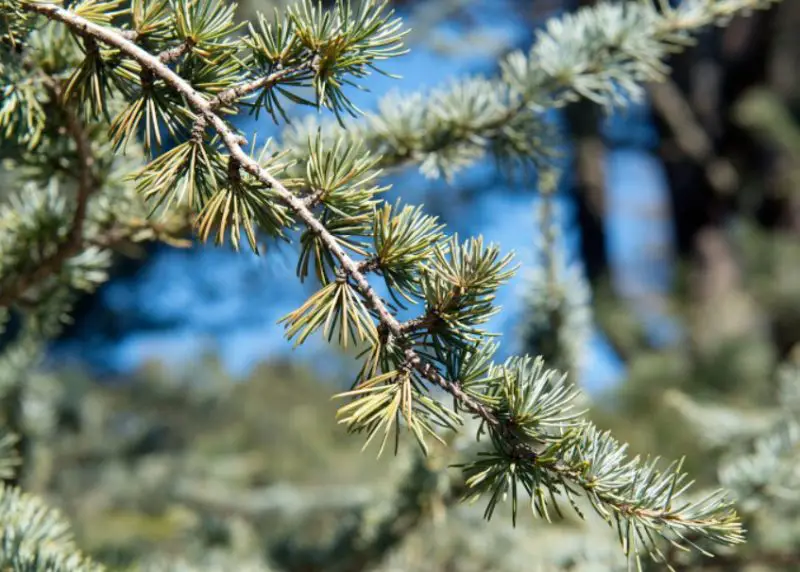
Mount Atlas Cedar (Cedrus atlantica), a subspecies of the Atlas Cedar, is native to the rugged Atlas Mountains of Morocco and Algeria. It is known for its strong, durable wood and striking ornamental appearance, making it a popular choice for both construction and landscaping. Its blue-green needles and broad, spreading canopy add to its aesthetic appeal.
Thriving in USDA hardiness zones 6–9, Mount Atlas Cedar prefers well-drained soils and can tolerate drought once established. This species is widely planted in parks and large gardens, where its resilience and beauty make it a standout feature.
Turkish Cedar
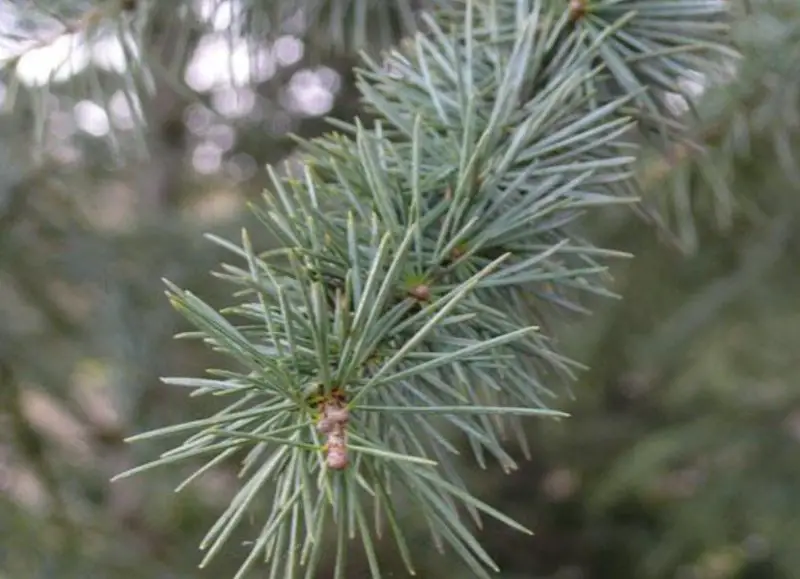
Turkish Cedar (Cedrus libani), a close relative of Lebanon Cedar, is native to the mountainous regions of Turkey. It is a highly durable and aromatic tree, historically used in shipbuilding and construction. Today, it remains a popular choice for timber and ornamental planting.
This species grows best in USDA hardiness zones 6–9, preferring well-drained soils and full sun. Its majestic form and resilience against harsh conditions make it a prominent feature in Turkish landscapes, particularly in national parks and conservation areas.
Cedrela Fissilis (Argentine Cedar)
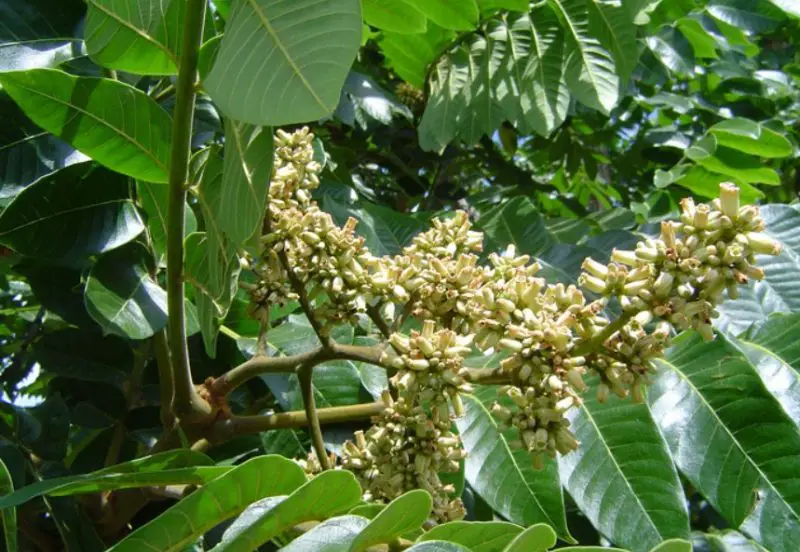
Cedrela Fissilis (Cedrela fissilis), also known as Argentine Cedar, is a tropical hardwood tree native to South America. It produces lightweight, aromatic wood that is highly valued for furniture, cabinetry, and musical instruments such as guitars.
Growing in USDA hardiness zones 9–12, this species thrives in warm, humid environments with well-drained soils. Due to overexploitation for timber, Argentine Cedar populations have declined in some areas, leading to increased conservation efforts to ensure sustainable harvesting.
Atlantic White Cedar
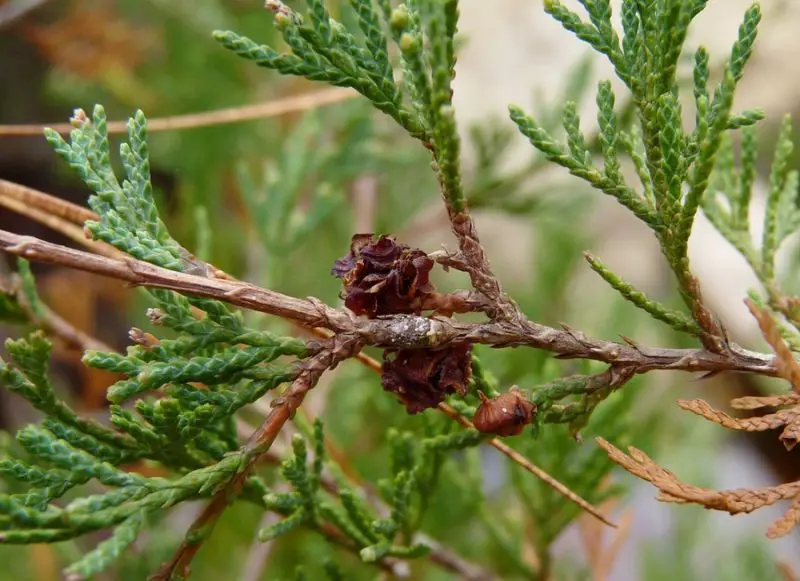
Atlantic White Cedar (Chamaecyparis thyoides) is a hardy evergreen tree native to the coastal wetlands of the eastern United States. It has soft, fine-grained wood that is naturally resistant to rot and decay, making it a preferred choice for boat building, shingles, and other outdoor applications.
This species grows in USDA hardiness zones 3–8, thriving in wet, swampy environments with acidic soils. Due to extensive logging in the past, Atlantic White Cedar populations have declined, leading to conservation efforts aimed at restoring wetland habitats where it naturally occurs.
Australian Red Cedar
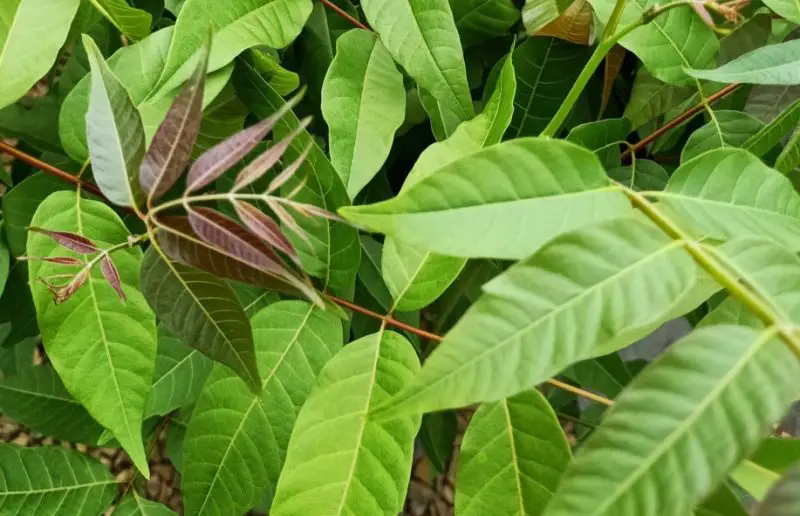
Australian Red Cedar (Toona ciliata), native to Australia and parts of Southeast Asia, is one of the most valuable timber trees in the region. It is renowned for its rich, reddish-brown wood, which is lightweight yet durable, making it highly sought after for high-quality furniture, cabinetry, and wood paneling.
This fast-growing species thrives in USDA hardiness zones 10–12, preferring warm, tropical climates with well-drained soils. Australian Red Cedar was once abundant but has been heavily logged over the years, leading to reforestation efforts to ensure its sustainability for future generations.
Chinese Cedar
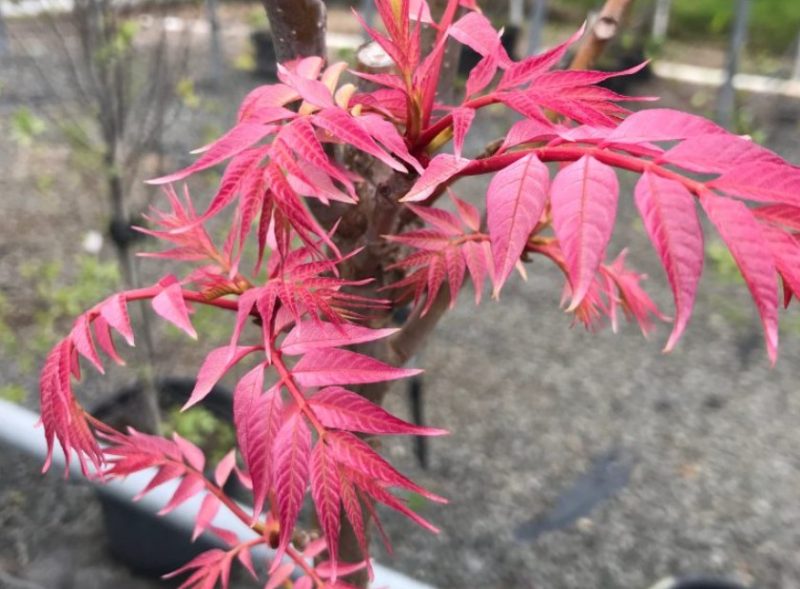
Chinese Cedar (Toona sinensis), also known as Chinese Toon, is a deciduous tree native to East Asia. It is valued for its lightweight, aromatic wood, which is commonly used in furniture making, cabinetry, and decorative carvings. Additionally, the young leaves and shoots are edible and used in Asian cuisine.
Thriving in USDA hardiness zones 6–10, Chinese Cedar prefers well-drained soils and warm, humid climates. It is also cultivated as an ornamental tree for its attractive foliage, which turns red in spring before maturing to green. Its rapid growth and adaptability make it a popular choice in landscaping.
Moroccan Cedar
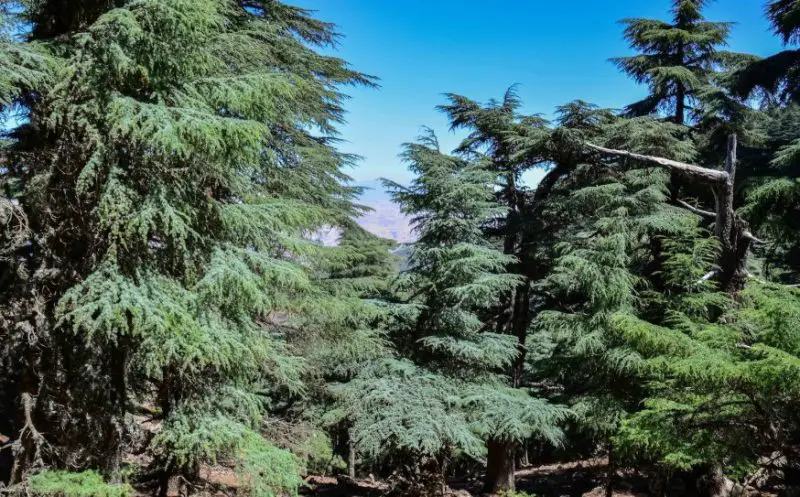
Moroccan Cedar is another name for Cedrus atlantica, commonly known as Atlas Cedar. Native to the Atlas Mountains of Morocco, this majestic evergreen is known for its strong, durable wood and blue-green needles. It has played a significant role in Moroccan culture and forestry.
Growing in USDA hardiness zones 6–9, Moroccan Cedar thrives in dry, rocky soils and is highly drought-tolerant once established. It is widely planted as an ornamental tree in large gardens and urban parks due to its striking appearance and resilience in harsh environments.
Siberian Cedar
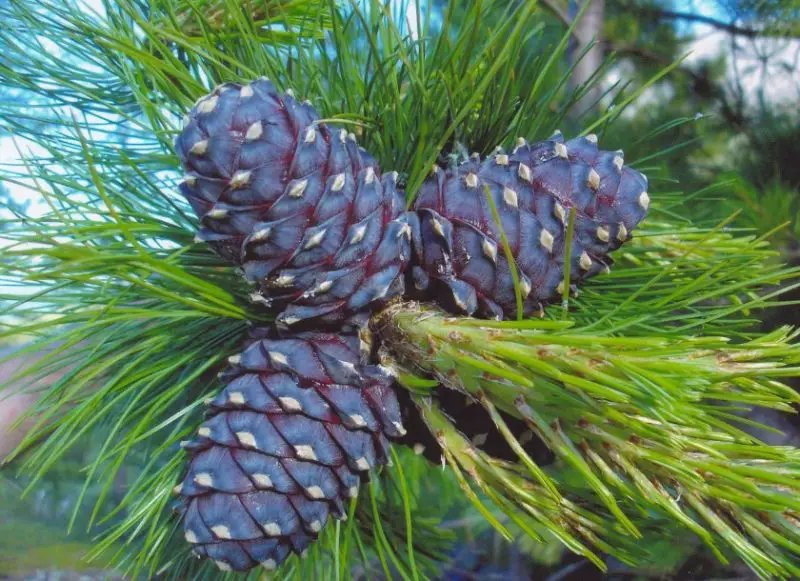
Siberian Cedar (Pinus sibirica), also called Siberian Pine, is a cold-hardy conifer native to the forests of Siberia. It is renowned for its high-quality wood, used in construction and furniture making, as well as its edible pine nuts, which are an important food source.
Thriving in USDA hardiness zones 1–6, Siberian Cedar is extremely frost-resistant and well-adapted to harsh winters. Its dense canopy provides excellent shelter for wildlife, and its nuts are widely harvested for both local consumption and commercial production.






